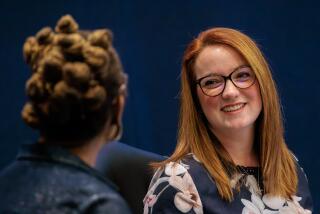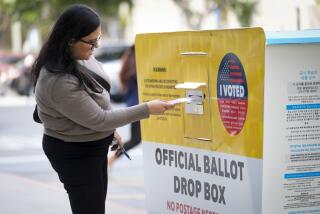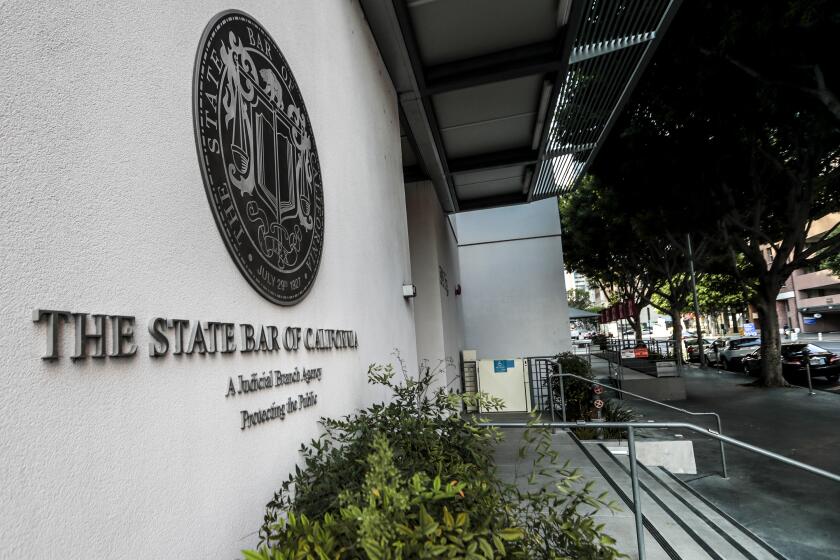Panel Rebuffs Bid to Keep Secession Talks Private
- Share via
Insisting on an open debate, members of the Local Agency Formation Commission on Wednesday rebuffed a bid by backers of San Fernando Valley secession to negotiate details of their plan behind closed doors.
A day after submitting a blueprint that proposed a wholesale dismantling of most Los Angeles city departments, a leader of the pro-secession group Valley VOTE suggested that LAFCO form a side committee where city officials and secessionists could privately resolve differences.
Bob Scott, a prominent Valley businessman and leader in the secession movement, said such meetings among “stakeholders” would be necessary to air issues involving the epic collection and analysis of data needed to carry out a study of the consequences of deconstructing Los Angeles.
“I am concerned that legal maneuvering could be used as a way to obfuscate the process,” Scott said, explaining that lengthy court action is likely unless the parties can resolve their differences.
City officials already have complained about having to provide the voluminous data needed to conduct the study, which is required by state law and must arrive at certain findings for the proposed split to go on the ballot.
Secession would require a majority vote of residents of the Valley, as well as the entire city.
Though they did not kill the plan outright, members of a LAFCO subcommittee on secession said Wednesday that if such meetings are to take place, the public must be allowed to participate.
“From this point forward, we have to adhere to a public disclosure mode, where everyone can see what we are doing,” said County Supervisor Zev Yaroslavsky, one of nine appointed members of LAFCO, the panel charged with overseeing the study of secession. “Otherwise, there is going to be a lot of suspicion about the way this is being conducted, and we don’t want that,” he said.
“It’s going to have to be done very openly,” said Los Angeles City Councilman Hal Bernson, another LAFCO panelist. “And I think it is going to be a very contentious process.”
LAFCO members spent the bulk of the hearing discussing ways to make the secession process more open, not less.
To that end, they hashed out a plan to raise public awareness of the issue by hosting a series of monthly public hearings. Though meetings would be held throughout Los Angeles, most would take place in the Valley and in the San Pedro-Wilmington area. On Wednesday, activists from that part of the city filed 16,900 signatures to formally pursue their own secession process.
The exact times and dates have not yet been determined, but LAFCO members said they are aiming for night meetings to ensure adequate public participation. LAFCO usually meets once or twice a month at 9 a.m. in the county Hall of Administration in downtown Los Angeles, with very few people in the audience.
“This is an extremely complicated process that the experts themselves are only now starting to understand,” said Valley VOTE Chairman Richard Close. “We need as many public hearings as possible to try and explain this issue to the voters.”
Conceding that most residents probably know little about LAFCO, a state-created panel that usually decides sewer district annexations and other minor municipal boundary shifts, LAFCO members also discussed plans to educate the public about secession. Ideas included creating a Web site, advertising in local newspapers and launching a public relations campaign.
But Yaroslavsky warned his LAFCO colleagues not to get carried away.
“We could spend $50 million on a public relations campaign to explain LAFCO,” he said, “and it would still remain an enigma.”
More to Read
Sign up for Essential California
The most important California stories and recommendations in your inbox every morning.
You may occasionally receive promotional content from the Los Angeles Times.










